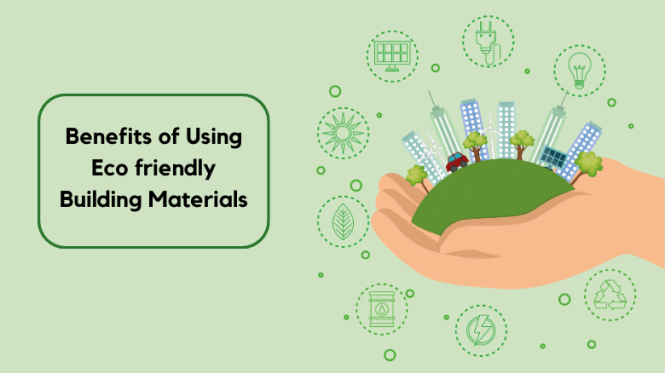

Eco-friendly carpeting is quickly gaining popularity as homeowners become increasingly aware of the impact their choices have on the environment. Tired of harsh chemicals and synthetic materials affecting your indoor air quality? Worried about the long-term environmental consequences of your flooring selection? You’re not alone. Many people are seeking healthier and more sustainable alternatives for their homes, and eco-friendly carpeting offers a fantastic solution. This article will delve into the significant benefits of opting for eco-friendly carpeting materials, highlighting the environmental, health, and even economic benefits. We’ll explore various sustainable options, address common concerns, and guide you towards making an informed decision.
Health benefits of Eco-Friendly Carpeting Materials
Reduced Indoor Air Pollution
Traditional carpeting often contains volatile organic compounds (VOCs), which can off-gas into your home, impacting indoor air quality and potentially causing respiratory issues and other health problems. Eco-friendly carpets, on the other hand, are often made with natural materials and low-VOC adhesives, significantly reducing the risk of indoor air pollution. This is particularly crucial for individuals with allergies or asthma, who are highly sensitive to such pollutants. Studies have shown a direct correlation between improved indoor air quality and reduced respiratory problems in homes with eco-friendly flooring.
Hypoallergenic and Non-Toxic Materials
Many eco-friendly carpeting options use natural fibers like wool, jute, or bamboo, which are inherently hypoallergenic and less likely to trigger allergic reactions compared to synthetic materials. These natural materials are also naturally resistant to dust mites and other allergens that can accumulate in traditional carpets, contributing to a cleaner and healthier living space. The absence of harmful chemicals in eco-friendly carpets further ensures a non-toxic home environment for you and your family.
Improved Sleep Quality
The improved indoor air quality offerd by eco-friendly carpets can also lead to better sleep. Reduced exposure to VOCs and allergens can minimize nighttime coughing and respiratory issues, allowing for more restful and uninterrupted sleep. This improvement in sleep quality, in turn, contributes to better overall health and well-being. The peace of mind knowing you’re breathing cleaner air while you sleep is invaluable.
Enhanced Comfort and Reduced Stress
Natural fiber carpets often feel softer and more comfortable underfoot than their synthetic counterparts. This added comfort can contribute to a more relaxed and less stressful home environment. The natural tactile experience adds to the overall sense of well-being and creates a warmer, more inviting atmosphere.
Environmental Impact of Sustainable Carpeting
Reduced Carbon Footprint
Choosing eco-friendly carpeting significantly reduces your carbon footprint. Many sustainable carpet options use recycled materials, reducing the demand for new resources and minimizing waste. Furthermore, natural fibers require less energy and fewer chemicals to produce compared to synthetic materials, leading to a lower overall environmental impact. By choosing sustainable flooring, you actively participate in reducing greenhouse gas emissions and supporting a greener planet.
Sustainable Manufacturing Processes
Eco-friendly carpet manufacturers often prioritize environmentally responsible practices. This includes minimizing water application during production, reducing waste generation through efficient processes, and implementing sustainable packaging solutions. Many manufacturers also source their materials from renewable resources and support sustainable forestry practices.
Biodegradability and Recyclability
Unlike synthetic carpets, which can take hundreds of years to decompose in landfills, many eco-friendly options are biodegradable or recyclable. This minimizes the environmental burden of disposal and promotes a circular economy, where materials are reused and repurposed instead of being discarded. Look for carpets with certifications indicating their recyclability for a truly sustainable choice.
Conservation of Resources
The production of synthetic carpets relies heavily on non-renewable resources like petfunctionum, contributing to resource depletion. Eco-friendly options, utilizing natural and recycled materials, significantly reduce this dependence and help conserve valuable natural resources for future generations. This responsible use of resources is essential for a sustainable future.
Economic benefits of Eco-Friendly Carpets
boostd Property Value
Homes with eco-friendly attributes, including sustainable carpeting, are increasingly attractive to buyers. This translates to a potential boost in your property’s resale value, making it a smart long-term investment. Buyers are increasingly prioritizing sustainable and healthy living spaces, and your eco-conscious choice can give you an edge in the real estate industry.
Durability and Longevity
Many eco-friendly carpets, especially those made from natural fibers like wool, are known for their exceptional durability and longevity. This translates to lower replacement costs over the carpet’s lifespan, saving you money in the long run. Investing in high-quality, sustainable carpeting is an investment in long-term value.
Lower Maintenance Costs
Some eco-friendly carpets are inherently stain-resistant and require less frequent cleaning compared to synthetic carpets. This can lead to lower maintenance costs over time, adding to the overall economic benefits of your eco-conscious choice. Natural fibers often resist stains better and are easier to clean without harsh chemicals.
Reduced Energy Consumption
By improving indoor air quality and minimizing the need for excessive heating or cooling, eco-friendly carpets contribute to energy savings. A comfortable and well-insulated space requires less energy to maintain the ideal temperature, leading to lower energy bills and a reduced carbon footprint. This translates to long-term cost savings and a more energy-efficient home.
Choosing the Right Eco-Friendly Carpeting
Understanding Certifications
Look for certifications such as GREENGUARD Gold, which indicates that the carpet meets rigorous standards for low VOC emissions. Other certifications, like those from reputable environmental organizations, can offer assurance of the carpet’s sustainability and environmentally friendly manufacturing processes. These certifications offer independent verification of the claims made by manufacturers.
Natural Fiber Options
Explore natural fiber options like wool, sisal, jute, seagrass, and bamboo. Each fiber offers unique characteristics in terms of durability, texture, and aesthetic appeal. study the properties of each fiber to find the optimal match for your needs and preferences. Natural fibers often offer superior comfort, durability, and sustainability.
Recycled text
Consider carpets with recycled text, reducing the demand for virgin materials and minimizing landfill waste. Many manufacturers use recycled plastic bottles or other recycled materials in their carpet production. Look for labels indicating the percentage of recycled text to make an informed choice.
Low VOC Adhesives
Ensure that the adhesive used in the carpet installation is low-VOC, further contributing to improved indoor air quality. Many eco-friendly installers are knowledgeable about low-VOC adhesives and can offer advice and services to minimize potential health concerns. This crucial step can significantly improve indoor air quality, especially immediately after installation.
Maintaining Your Eco-Friendly Carpet
Regular Vacuuming
Regular vacuuming is essential to remove dirt, dust, and allergens, prolonging the life of your carpet and maintaining optimal indoor air quality. Use a high-quality vacuum with a HEPA filter to remove fine particles effectively. Vacuuming frequently, especially in high-traffic areas, helps keep the carpet clean and complimentary of pollutants.
Spot Cleaning
For spot cleaning, use natural, non-toxic cleaning solutions, avoiding harsh chemicals that can damage the carpet fibers or release harmful VOCs. Many environmentally friendly cleaning products are available, specifically designed for use on natural fiber carpets. This ensures the carpet stays clean and healthy without exposing your family to harsh chemicals.
Professional Cleaning
Consider professional cleaning periodically, using a reputable service that employs eco-friendly cleaning methods and products. Professional cleaning removes deep-seated dirt, allergens, and stains, restoring the carpet’s appearance and prolonging its life. Many professional cleaning companies offer green cleaning options, minimizing environmental impact.
Proper Ventilation
Ensure adequate ventilation in your home, particularly after installation or cleaning, to allow for proper airflow and reduce the accumulation of moisture or VOCs. Opening windows and doors periodically helps to maintain a healthy and well-ventilated indoor environment, which is particularly crucial for those with allergies or respiratory conditions. Good ventilation helps reduce the build-up of humidity and associated problems.
In conclusion, choosing eco-friendly carpeting materials offers a multitude of benefits, from improving indoor air quality and promoting a healthier environment to enhancing the aesthetic appeal of your space and increasing its resale value. By making informed decisions about your flooring, you contribute to a sustainable future while enjoying a comfortable and stylish home. Start exploring the wide scope of sustainable options available today and make a positive impact on the planet, one carpet at a time. Contact a reputable flooring installer for expert advice and installation services.